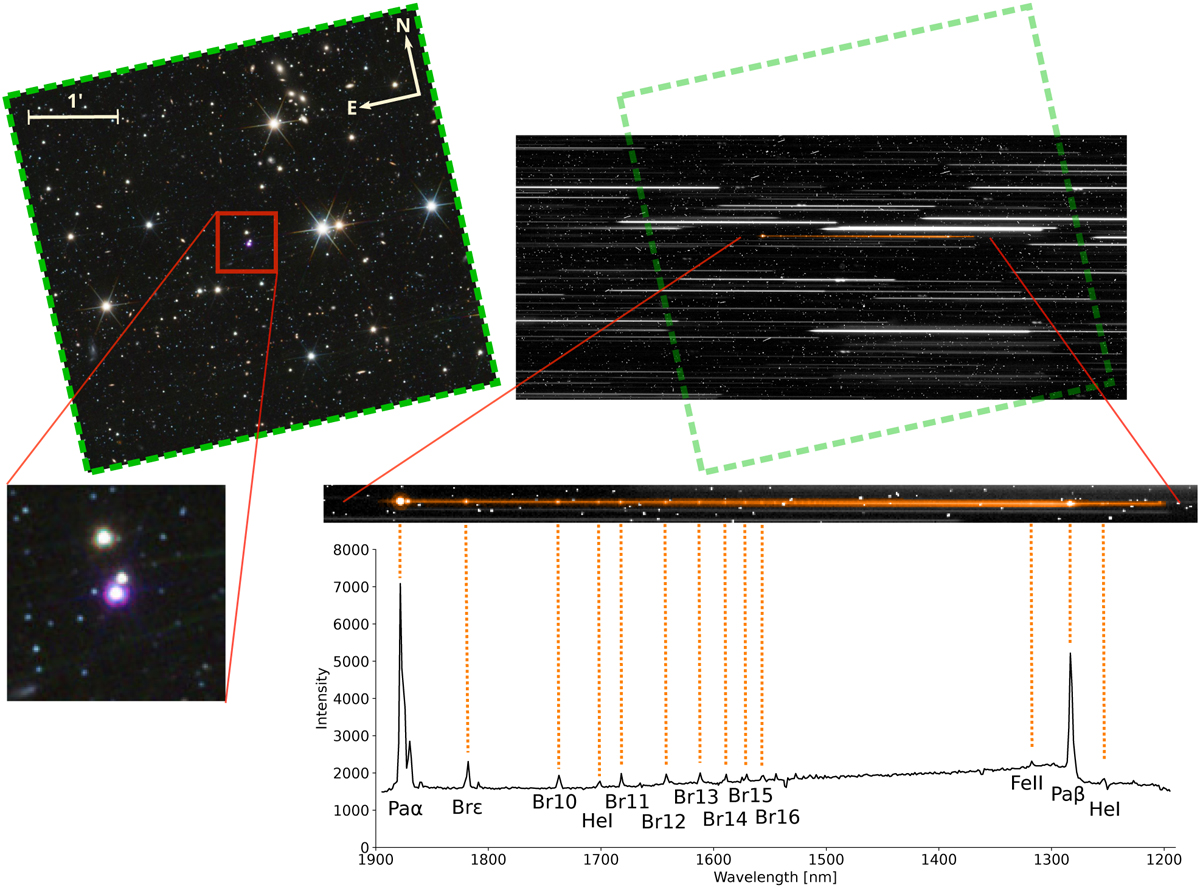Fig. 15

Download original image
NISP-S grism slitless spectroscopy mode. Left: NISP-P colour-composite image of the planetary nebula (PN) SMC-SMP-20 (Euclid Collaboration: Paterson et al. 2023), observed during the PV phase for wavelength calibration. The PN is located at the image centre; with a diameter of 0′.′40 it appears unresolved. Right: raw NISP-S 2D-spectrogram of the same area, the photometry field is sketched again with a green box. Each horizontal stripes is a spectrogram of a bright object. Small dots between these spectrograms are mostly cosmic rays hitting the detector. The PN can easily be identified in the 2D-spectrogram by the distinct emission lines above a weak continuum; it has been colourised for emphasis. The zoom below repeats the 2D-spectrum together with the extracted 1d-spectrum. Identified emission lines are marked. We note that the direction of the wavelength axis will differ on the sky depending on the specific grism used. The visible strong Paβ emission in YE -band and the Paα line in the HE -band lend a distinct purple colour to the PN and its prominent diffraction ring in the image on the left.
Current usage metrics show cumulative count of Article Views (full-text article views including HTML views, PDF and ePub downloads, according to the available data) and Abstracts Views on Vision4Press platform.
Data correspond to usage on the plateform after 2015. The current usage metrics is available 48-96 hours after online publication and is updated daily on week days.
Initial download of the metrics may take a while.


